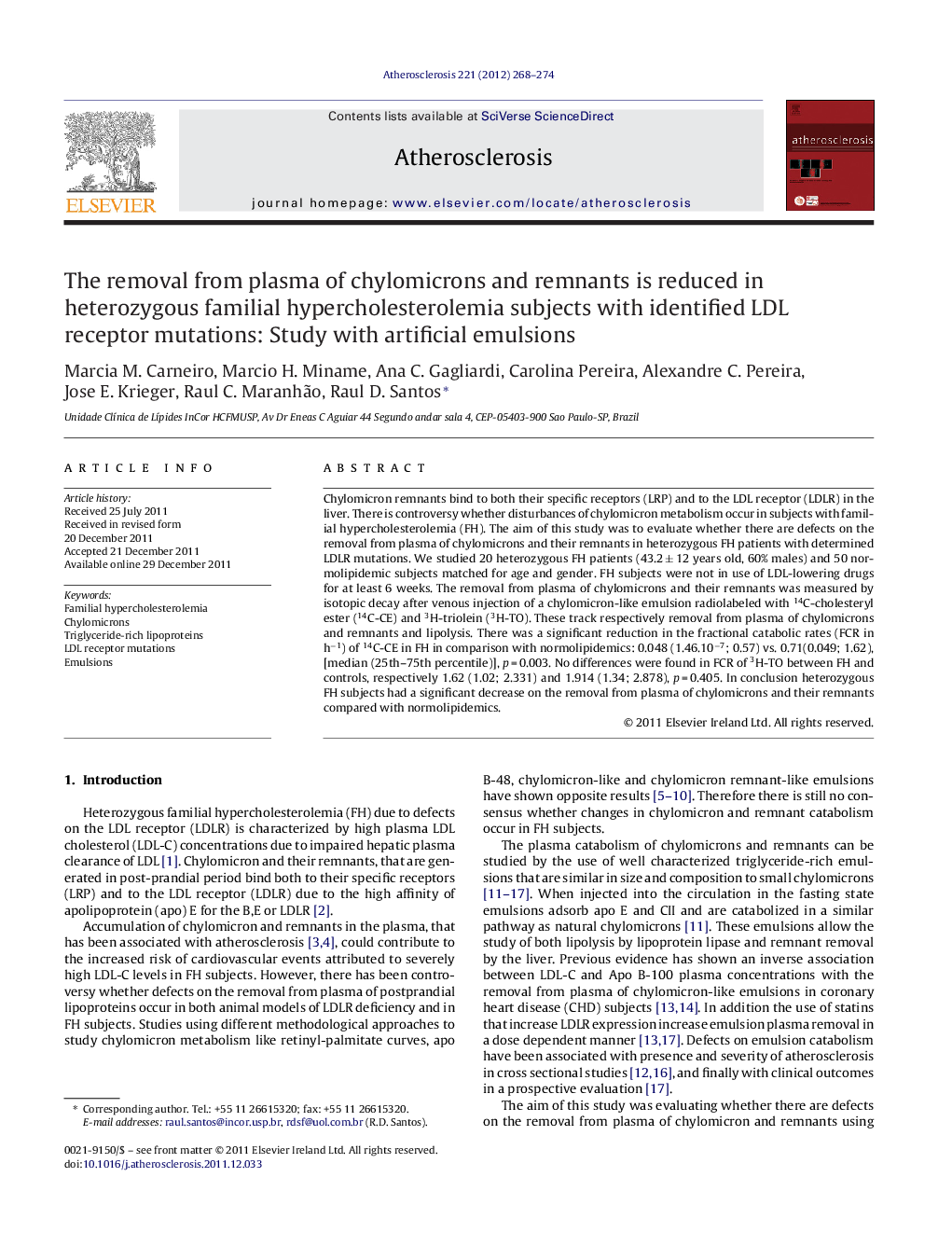| Article ID | Journal | Published Year | Pages | File Type |
|---|---|---|---|---|
| 5949002 | Atherosclerosis | 2012 | 7 Pages |
Chylomicron remnants bind to both their specific receptors (LRP) and to the LDL receptor (LDLR) in the liver. There is controversy whether disturbances of chylomicron metabolism occur in subjects with familial hypercholesterolemia (FH). The aim of this study was to evaluate whether there are defects on the removal from plasma of chylomicrons and their remnants in heterozygous FH patients with determined LDLR mutations. We studied 20 heterozygous FH patients (43.2 ± 12 years old, 60% males) and 50 normolipidemic subjects matched for age and gender. FH subjects were not in use of LDL-lowering drugs for at least 6 weeks. The removal from plasma of chylomicrons and their remnants was measured by isotopic decay after venous injection of a chylomicron-like emulsion radiolabeled with 14C-cholesteryl ester (14C-CE) and 3H-triolein (3H-TO). These track respectively removal from plasma of chylomicrons and remnants and lipolysis. There was a significant reduction in the fractional catabolic rates (FCR in hâ1) of 14C-CE in FH in comparison with normolipidemics: 0.048 (1.46.10â7; 0.57) vs. 0.71(0.049; 1.62), [median (25th-75th percentile)], p = 0.003. No differences were found in FCR of 3H-TO between FH and controls, respectively 1.62 (1.02; 2.331) and 1.914 (1.34; 2.878), p = 0.405. In conclusion heterozygous FH subjects had a significant decrease on the removal from plasma of chylomicrons and their remnants compared with normolipidemics.
⺠Chylomicron-like emulsion can test the plasma catabolism of chylomicrons in men. ⺠The clearance of chylomicrons was reduced in heterozygous familial hypercholesterolemia. ⺠No changes in lipolysis were detected.
